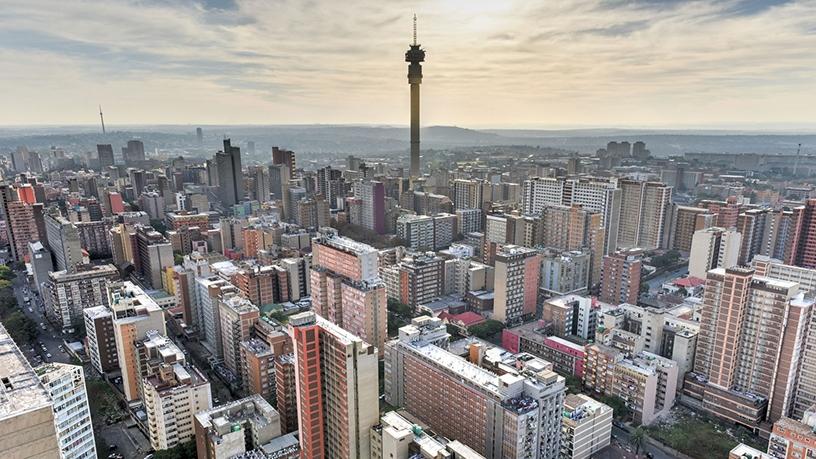
With 2018 under way, analysts would like to see government prioritise ICT projects that it previously hyped up.
Over the years, government departments and agencies have proposed and subsequently poured billions of rands into a few ICT-related projects. These include SA Connect, the integrated financial management system, digital migration, set-top box (STB) production, as well the wholesale open access network (WOAN), to name but a few.
Government has on numerous occasions stressed the importance of ICT and innovation as key elements for the country's economic growth and to address poverty, unemployment and inequality.
It also expressed the desire to see ICT become an integral part in the country's education system, as well as to help bridge the digital divide among South African citizens.
However, the process for implementing some of these high-priority ICT projects has either resulted in delays or projects falling by the wayside.
Broadband ambitions
Government's long-awaited broadband plan, SA Connect, was given the green light in 2013. The project aims to deliver 100% broadband connectivity to government facilities by 2020. It is also expected to provide broadband access to 90% of the country's population by 2020 and 100% by 2030.
Due to the magnitude of the project, government decided to implement the project in two stages. In terms of phase one, the project would connect all schools, health facilities, government offices, Thusong Centres and post offices, in eight rural district municipalities, to broadband services.
In the 2015 State of the Nation Address, president Jacob Zuma declared that year "the year of broadband" in the hope SA Connect would take off. However, it has yet to deliver on its promise of connecting South Africans.
However, the Adjusted Estimates of National Expenditure document, included in the 2017 Medium-Term Budget Policy Statement, revealed that changes to the implementation model for phase one of SA Connect resulted in delays in rolling out the broadband project.
ICT veteran and IITPSA programme consultant Adrian Schofield says SA Connect is the most obvious project government should prioritise in 2018, as there has been no movement on this initiative since it was announced.
He explains: "Sadly, it continues the legacy of all of the initiatives that have set out with the intention of providing connectivity in under-serviced areas. In various guises, the USAF [Universal Service and Access Fund] and USAASA [Universal Service and Access Agency of SA] have failed to incentivise or implement the rollout of network access to rural areas away from population centres and main traffic routes.
"The principal challenge appears to be the lack of project management capacity within government to push it forward and a poor relationship between government and private sector preventing an effective partnership to address the issue."
Digital migration
South Africa's digital migration project has long been plagued by numerous hurdles, ranging from the legal battles over the standards of STBs, bribery and corruption allegations relating to the procurement process of the digital TV decoders, as well as party politics over the amendments to the African National Congress (ANC) broadcasting digital migration policy.
In December, the ANC issued a directive that SA's switch from analogue to digital terrestrial television (DTT) must be completed by June 2019.
Schofield says the delays to the country's digital migration process have been appalling andinexcusable.
These delays, he says, arise "from a toxic combination of poor political understanding of the consequences of the failure to meet the deadline and the behind-the-scenes pressures from the conflicted interest groups looking to profit from the rollout of DTT".
After missing the June 2015 deadline set by the International Telecommunication Union (ITU) for countries to complete the full switch to DTT, SA is playing catch-up to meet digital migration goals.
The ITU has called on nations to switch over from analogue to digital broadcasting signal to allow radio frequency spectrum to be freed up for mobile broadband services.
WOAN perspective
Pundits also believe there needs to be a clear roadmap for how government intends to implement the WOAN model for spectrum allocation.
The proposal of a WOAN model for allocating spectrum was put forward in the National Integrated ICT Policy White Paper, which was facilitated by the Department of Telecommunications and Postal Services.
The white paper was finalised and published in September 2016, and is supposed to replace the separate white papers on telecommunication (1996) and postal services (1998).
The WOAN model aims to encourage a sharing model for spectrum allocation as opposed to auctioning the resource to the highest bidder, according to the department.
Anesu Charamba, consulting manager for digital transformation practice at Frost & Sullivan, says of all the projects listed by government, the most important thing is re-establishing meaningful milestones and roadmaps.
All the projects have gone through some form of delay or postponement, chipping at the credibility and perceived value of the projects, he says.
"Making meaningful progress in these projects during 2018 will re-establish credibility and further provide a foundation for impactful socio-economic growth. This will be important given the multiple change vectors from the political and business realms this year.
"Consistent government policy implementation is worth its weight in gold."
However, Schofield thinks the WOAN model should not be on the list of government priorities.
"Government's attempts to implement it fly in the face of established practice and appear to repudiate an agreement reached between government and the networks last year. There is no successful precedent for following this course and the dictatorial approach to spectrum allocation will destroy competition in the sector," he concludes.
Share